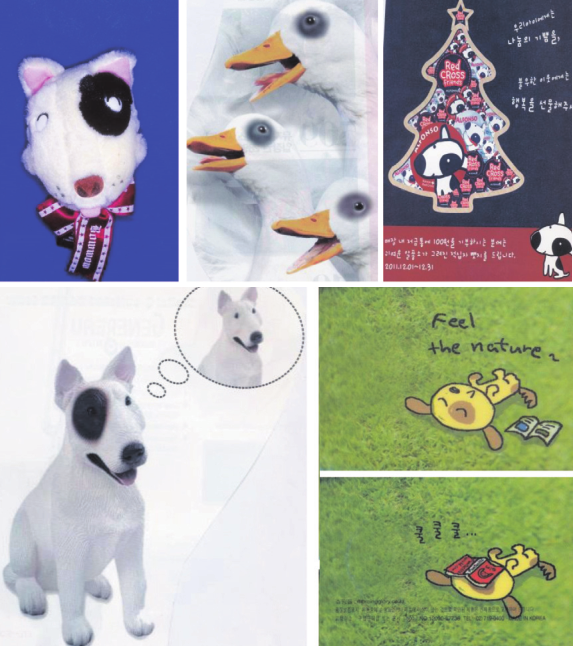
Dr. Ahn says we can find dermatological subjects in many aspects of our life outside the field of medicine. In this series, we are going to take a look at various skin conditions featured in history, religion, literature, film, art, music, and photography. Our readers may be surprised to find there are more anecdotes and phenomena related to dermatology in our culture than we expect. This series will also provide a refreshing look at the science of dermatology. In this series, readers will be able to explore cultural and artistic aspects of dermatology.

Figure 1. Dark spots in animals.
In the 90s, there was a popular cartoon in Korea featuring a dog with a dark ring around its one eye. The dark spots on its eye was the dog’s defining look and the fans found it to be very endearing. Dark rings around the eyes in humans, however, develop due to proliferation of melanocytes in the skin around the eye (temple, forehead, nose, cheekbone) where thetrigeminal nerve exists as well as in the eye (conjunctiva, sclera, retina). A blue or gray patch on one side of the face is called Ota’s nevus. It affects Asians more frequently than Caucasians or blacks, with about three out of every 10,000 Koreans presenting Ota’s nevus.
The Mongolian spot disappears as the child grows but Ota’s nevus is permanent. Patients with this pigmentary disorder are often misunderstood to have been in a fight as the lesion resembles a bruise. It is a source of emotional stress. In the past, there was no treatment for this condition. However, fortunately, effective treatment is becoming possible with the development of laser.
Ota is the name of a Japanese dermatologist who first described the condition. We frequently come across Japanese names in dermatology. Japan was 50 years ahead of Korea in establishing a national dermatology society. As Japan boasts strong scientific research skills comparable to those of the US and UK, they also boast a greater number of Nobel laureates in science. Korea needs to step up its efforts in this regard.
When these dark spots are seen in animals, they are seen as cute and endearing. Many mascots used in commercial brands sport dark spots on their face.
HELIOSⅡ/LOTUSⅡ/HYPERION – Manufacturer: LASEROPTEK(www.laseroptek.com)
Masao Ota was born in Ito, Japan in 1885. He graduated from medical school in 1911 and got dermatologist training under Professor Dohi at University of Tokyo Medical School. Dohi was a leading expert in dermatology in Japan. Ota taught medicine at South Manchuria University (1918-1926), worked as a research fellow at the Pasteur Research Center in Paris and taught medicine at Nagoya University Medical School (1924-1928), and at Sendai University Medical School (1926-1937). In 1937, Ota inherited Dohi’s position as the head of dermatology department in recognition of his achievements in the field of dermatology.




















